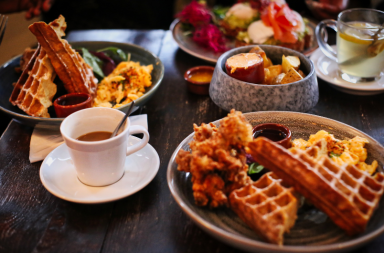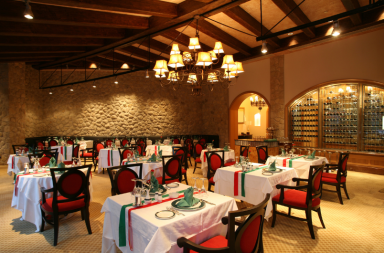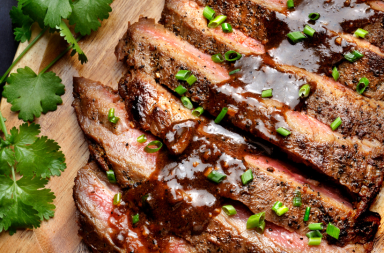Wine Pairing 101: Tips for Perfect Pairings
Wine pairing is often considered an art form, one that can elevate a simple meal into a memorable dining experience. The right wine can enhance the flavors of a dish, bringing out subtle notes that might otherwise go unnoticed. Conversely, a poorly chosen wine can overshadow the meal, leaving a less-than-satisfactory impression. As the Cincinnati Food and Wine Classic showcases the best of local and international wines, understanding the basics of wine pairing becomes essential for anyone looking to enhance their culinary adventures. In this guide, we will explore the fundamental principles of wine pairing, practical tips for selecting the perfect wine, and how to navigate the complexities of flavor combinations.
At its core, the goal of wine pairing is to create a harmonious balance between food and wine. This balance can be achieved by considering the flavors, textures, and aromas of both the dish and the wine. A classic approach to wine pairing is the “white with fish, red with meat” rule, which serves as a basic guideline for many. However, this rule is not set in stone, and there are plenty of exceptions that can lead to delightful surprises. For instance, a light-bodied red wine like Pinot Noir can pair beautifully with salmon, while a rich Chardonnay can complement a creamy pasta dish. The key is to experiment and discover what works best for your palate.
Understanding Wine Profiles
One of the most effective ways to enhance your wine pairing skills is to understand the primary flavor profiles of different wines. Wines can generally be categorized into four main flavor profiles: sweet, acidic, tannic, and fruity. Sweet wines, such as Riesling or Moscato, pair well with spicy dishes, as their sweetness can help to balance the heat. On the other hand, acidic wines, like Sauvignon Blanc or Champagne, can cut through rich and fatty foods, such as fried chicken or creamy cheeses. Tannic wines, such as Cabernet Sauvignon or Syrah, are often best enjoyed with hearty meats, as the tannins help to soften the flavors of the dish. Lastly, fruity wines, like Zinfandel or Grenache, can complement dishes that feature fruit elements, such as salads with berries or pork with apple sauce.
Pairing by Texture and Weight
In addition to flavor profiles, the texture and weight of both food and wine play a crucial role in successful pairings. For instance, a light, crisp white wine like Pinot Grigio pairs well with light dishes such as salads or seafood, while a full-bodied red wine like Malbec is better suited for rich, hearty dishes like steak or braised lamb. The weight of the wine should generally match the weight of the food; pairing a delicate wine with a heavy dish can result in a mismatch that detracts from both the food and the wine.
The cooking method can also influence the pairing. Grilled or roasted meats tend to pair well with bold red wines, while lighter preparations, such as poached or steamed dishes, often call for white wines or lighter reds. Additionally, the seasoning used in the dish can influence your choice of wine. For example, dishes seasoned with herbs like rosemary or thyme might pair well with a Sauvignon Blanc, while those with spices like cumin or chili powder could benefit from a fruity Zinfandel. Understanding these nuances can help you make informed decisions when selecting wine for any occasion.
Regional Compatibility
Another essential aspect of wine pairing is the concept of regional compatibility. Often, the best pairings come from the same geographical area, as local wines have evolved alongside the regional cuisine. For instance, Italian wines like Chianti or Barolo are perfect companions for classic Italian dishes such as pasta and risotto. Similarly, wines from the Burgundy region of France, known for their Pinot Noir and Chardonnay, pair beautifully with dishes featuring duck or creamy sauces. In Cincinnati, where culinary influences are diverse, exploring local wine options can lead to exciting pairings that celebrate the city’s gastronomic landscape.
Exploring Cincinnati’s Local Wine Scene
As the Cincinnati Food and Wine Classic approaches, participants can expect to encounter a wide variety of wines that showcase both local and international selections. This event is an excellent opportunity to expand your wine knowledge and discover new favorites. Cincinnati has a burgeoning wine scene, with local wineries producing excellent varieties that reflect the region’s terroir. For example, Ohio is known for its sweet wines, particularly those made from Concord grapes, which can be a delightful pairing with spicy barbecue dishes. Exploring local wineries not only supports the community but also allows you to taste wines that may not be available elsewhere.
Attendees of the Cincinnati Food and Wine Classic can participate in tastings, workshops, and demonstrations led by expert sommeliers and chefs, all of whom are eager to share their insights on wine pairing. Engaging with these professionals can provide invaluable tips and tricks that will enhance your understanding of the art of pairing. Take advantage of the opportunity to ask questions, learn about different varietals, and discover how to best pair them with various dishes.
Practical Tips for Pairing Wine and Food
When it comes to practicing your wine pairing skills at home, there are several practical tips to keep in mind. First, always taste the food before selecting a wine. Understanding the primary flavors and textures of the dish will help you make a more informed choice. Second, consider the occasion and the preferences of your guests. If you know your friends enjoy bold red wines, you might want to choose a pairing that highlights those preferences, even if it means stepping outside traditional pairing guidelines.
Another tip is to keep a wine journal. As you experiment with different pairings, jot down your thoughts on what worked and what didn’t. This will help you refine your palate and build a personal reference for future pairings. Additionally, consider hosting a wine and food pairing party. Invite friends or family to join you in exploring different combinations. Prepare a selection of small dishes, each paired with a different wine, and encourage guests to share their thoughts on the pairings. This interactive approach not only makes for a delightful evening but also fosters a deeper appreciation for the nuances of flavor and aroma in both food and wine.
Embracing Experimentation
As you embark on your wine pairing journey, remember that the ultimate goal is to enhance your dining experience. Whether you’re enjoying a casual meal at home or attending a special event like the Cincinnati Food and Wine Classic, the right wine can elevate your meal and create lasting memories. By understanding the fundamental principles of wine pairing, experimenting with different combinations, and embracing the joy of discovery, you can unlock a world of flavors that will enrich your culinary adventures.
Don’t be afraid to try unconventional combinations or explore lesser-known wines. You might discover a new favorite pairing that surprises and delights your palate. For instance, consider pairing a spicy Thai curry with a slightly off-dry Riesling, which can balance the heat while complementing the dish’s complex flavors. Similarly, a rich chocolate dessert can be beautifully paired with a bold port or a fruity Cabernet Sauvignon, creating a delightful contrast that enhances both the wine and the dessert.
Conclusion
In conclusion, mastering the art of wine pairing is an exciting and rewarding endeavor that can transform your dining experiences. By considering the flavors, textures, and aromas of both food and wine, you can create harmonious combinations that delight the senses. Remember to explore regional pairings, engage with local wine events, and, most importantly, have fun experimenting with different wines and dishes. The world of wine is vast and diverse, and each bottle has a story to tell. So, raise a glass, savor the moment, and enjoy the journey of discovering the perfect wine pairings that elevate your meals.
As you continue to explore the world of wine, remember that there are no hard and fast rules. The best pairings come from personal experience and experimentation. Trust your palate, and don’t hesitate to seek out new flavors and combinations. Whether you’re dining at a fine restaurant, hosting a dinner party, or enjoying a quiet meal at home, the right wine can enhance your experience and create lasting memories. Cheers to your wine pairing journey, and may it be filled with delightful discoveries and unforgettable moments!


